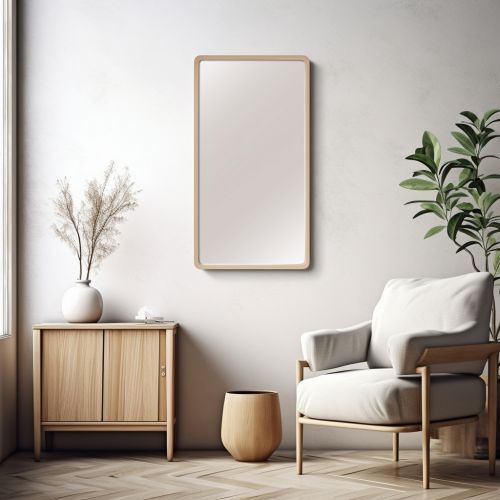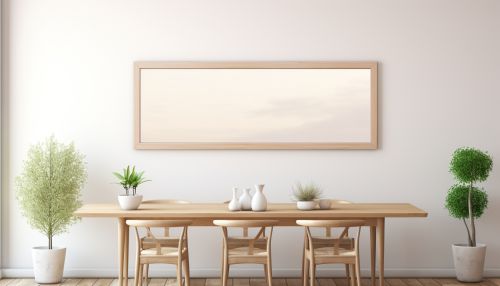Mirror
Introduction
A mirror is a surface that reflects light in such a way that for incident light in some range of wavelengths, the reflected light preserves many or most of the detailed physical characteristics of the original light, called specular reflection. This is different from other light-reflecting objects that do not preserve much of the original wave signal other than color and diffuse reflected light, such as flat-white paint.


History
The earliest manufactured mirrors were pieces of polished stone such as obsidian, a naturally occurring volcanic glass. Examples of obsidian mirrors found in Anatolia (modern-day Turkey) have been dated to around 6000 BC. Polished stone mirrors from Central and South America date from around 2000 BC onwards.
Manufacturing
The manufacturing process begins with the production of a glass substrate, typically using the float glass process. This involves pouring molten glass onto a pool of molten tin, creating a perfectly flat and smooth surface as the glass cools and solidifies.
Types of Mirrors
There are many types of mirrors, each representing a different manufacturing process and reflection type.
Plane Mirror
A plane mirror is a mirror with a flat (planar) reflective surface. For light rays coming from a point not on the mirror, a plane mirror produces a virtual image, in the same direction as the object and the same distance from the mirror.
Concave Mirror
A concave mirror has a reflecting surface that bulges inward (away from the incident light). Concave mirrors reflect light inward to one focal point, which results in a magnified image.
Convex Mirror
A convex mirror, fish-eye mirror or diverging mirror, is a curved mirror in which the reflective surface bulges toward the light source. Convex mirrors reflect light outwards, therefore they are not used to focus light.
Applications
Mirrors are used in a wide range of applications, from personal grooming and interior design to scientific apparatus such as telescopes and lasers, and in industrial machinery.
Personal Grooming
Mirrors are commonly used in personal grooming, known as looking glasses or vanity mirrors. They are typically found in bathrooms and bedrooms, and are often combined with a dressing table in the latter.
Interior Design
In interior design, mirrors can be used to create a sense of space in a room, reflect light to brighten a room, or as a decorative element. They are often used in a range of furniture items such as wardrobes and sideboards.
Scientific Apparatus
Mirrors are key elements in optical systems and their physical and optical properties are central to the design and performance of systems such as telescopes, microscopes, lasers, cameras, and industrial inspection gear.
Industrial Machinery
Mirrors are also used in industrial machinery, particularly where precise reflection of light beams is required. For example, in laser cutting machines, mirrors are used to direct the laser beam to the correct location.
